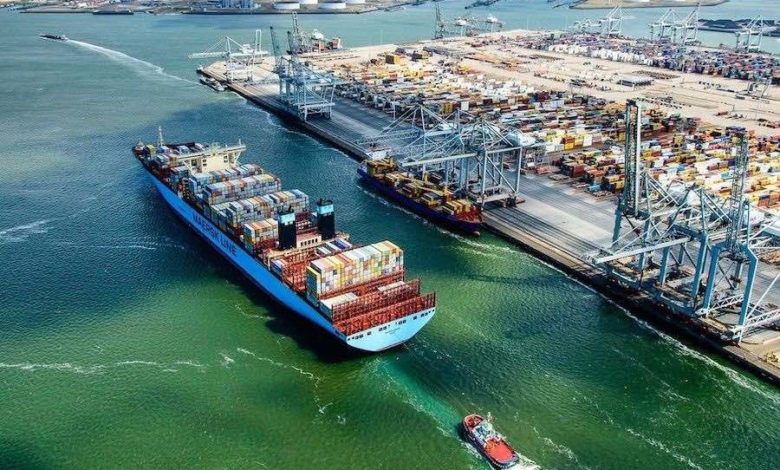Pooling, banking or borrowing: pathways to compliance with Fuel EU Maritime

Vessel owners and operators have a range of options but must decide which works for their fleet, writes Christian Rae Holm, managing director at Coach Solutions.
The shipping industry is jetting off for its summer holidays but while the rich and famous enjoy the sun, operations staff have their eyes on January 1 2025, when the European Union’s FuelEU Maritime regulation comes into force.
There are several options for compliance with Fuel EU Maritime. Some are simpler than others, but all come with an increase in reporting, data collection and verification.
The first option is ‘pay to play’, in other words treating FuelEU Maritime penalties as a CO2 tax and not considering ways to reduce your vessel’s carbon intensity on voyages to, from and within the EU.
This may make sense for some owners, and possibly be the only technically viable option for one-off voyages within the EU. However, the 10% annual increase in penalties should be borne in mind as a negative factor for this strategy in the long term.
Bear in mind also, that the penalty amount (Eur2,400 per tonne of HFO equivalent undercompliance) is set at a level which is intended to promote bunkering of low-carbon fuels and therefore, this path to compliance will always be one of the most expensive in the long run.
For example, a vessel consuming 1,000 tonnes of HFO on EU voyages in 2025 will be liable for a penalty of around Eur59,000 in that year.
The second option is pooling non-compliant vessels with over-compliant vessels (though not ones that are exactly at compliance levels) to achieve pool compliance on an aggregate basis. This can be done with vessels in the same fleet or with the vessels of other owners/document of compliance holders, and the pool configuration can be changed every year.
This suggests that canny owners will be willing to trade into and out of pools with different marketplaces designed to accommodate for different pool vessels by different owners – and at what price overcompliance will be sold.
In order to reach pool compliance between 2025 and 2029, 2.6% of the fuel mass consumed by the vessels can be replaced by e-methanol produced using energy from renewable resources. Another pathway to compliance is to replace 3.2% of the fuel mass with B100 bio-diesel.
In order for the pathway using e-methanol to be cheaper than the penalties, the price needs to be less than Eur2,250/mT. For B100 to be cheaper, the price will need to be Eur1,840/mT or less. A deeper analysis can be made by comparing strategies which also incorporate the energy content of low-carbon fuels. Methanol for example has around half of the energy content per tonne compared with bio-diesel.
Owners also have the option of borrowing from expected future overcompliance in order to achieve their numbers. This hedge on future performance may be enough to give them more time to decide on their compliance strategy from 2026 and onwards, though this option comes with a 10% interest rate.
The – so far very few – vessels fitted with wind-assisted propulsion can be subject to a GHG intensity reduction of up to 5%, which will keep vessels in compliance until the 6% limit is introduced in 2030 – though suppliers of such systems claim that actual GHG reductions can be considerably higher.
Practical compliance
The key issue for FuelEU Maritime is that reporting complexity will increase significantly when vessels need to keep track of which fuels were consumed each day and by which consumer. This doesn’t only involve the traditional method of reporting HFO, LFO etc, but makes it necessary to link each fuel consumed with a bunker delivery note.
For e-fuels and biofuels, reference to the Proof of Sustainability also needs to be reported so that verifiers can validate reported well-to-tank emissions.
If that sounds complicated, then for a minute imagine that kind of accounting for blended fuels with different BDNs and well-to-wake emission factors.
Class society DNV has put in the work to establish an updated “BDN-based” reporting method for their industry-wide Operational Vessel Data standard, together with associated guidelines. Coach will supply data in this format through our public API to emissions verifiers for all of our customers, ensuring that the Excel-wizards are assigned to other tasks.
The noon report validations we perform are finely attuned with verification providers and this process will continue with the new requirements. This will ensure that operators can quickly pull statements for voyages and time periods. For vessels which do not require verified periodic emissions statements during the year, provision of validated data to owners ensures that they are not making critical decisions based on guesses.
The aim is to create a single source of truth. The data reported and validated in our systems will not need manual checking and corrections, ensuring that shipping companies can concentrate on doing what they do best and use the data we provide for deciding on pathways towards compliance.
